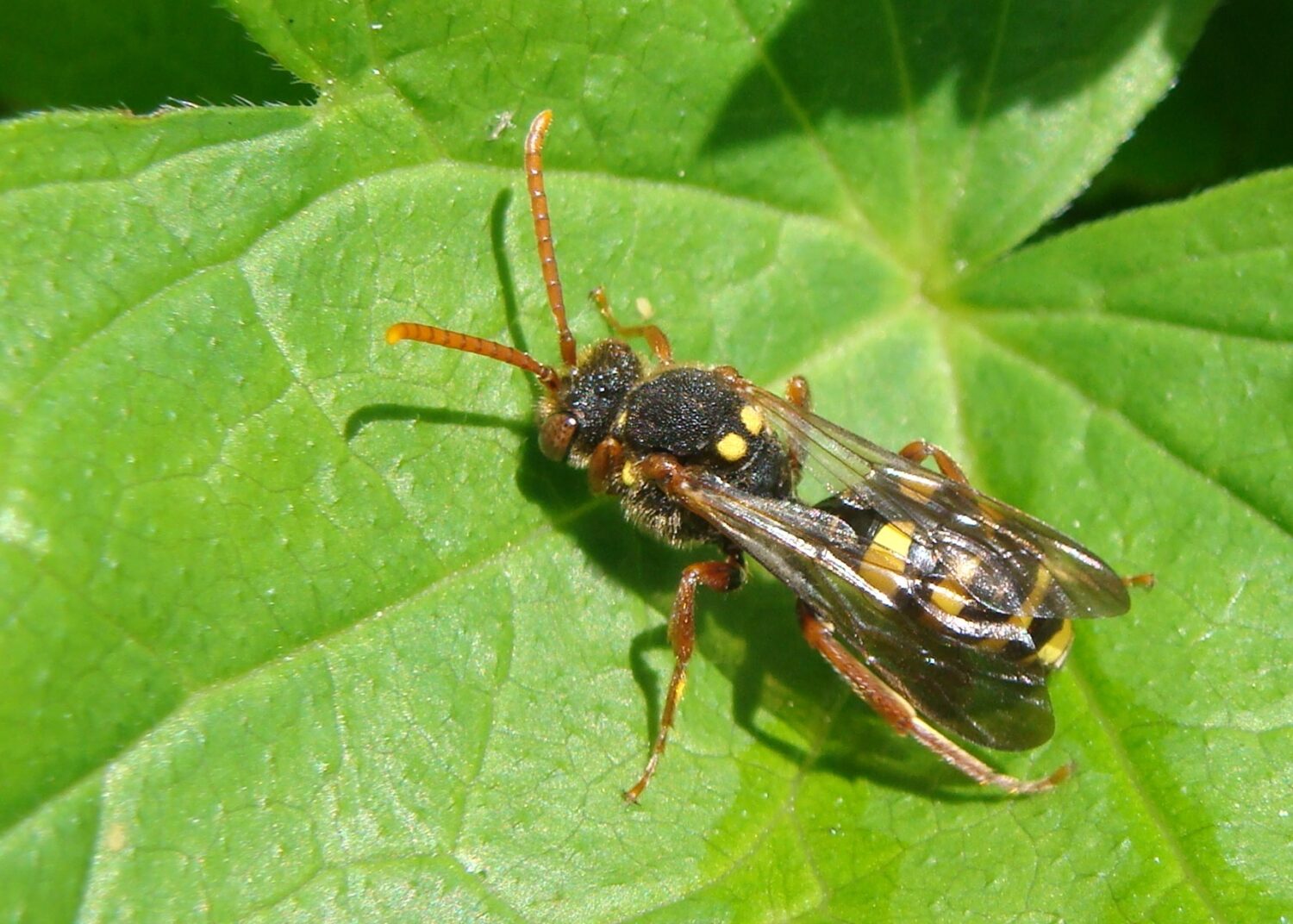Charlotte Rankin, NHSN Conservation Officer, introduces bee diversity and the species that can be discovered in the North East.
Honeybees and Bumblebees are the bees most familiar to us, yet these bees account for just ten-percent of over 250 bee species in Britain and Ireland. Here in the North East, there are around 100 bee species known from the region. The vast majority of bee species are known as solitary bees, and as their name suggests, these bees do not live in colonies. To add to this diversity are the ‘cuckoo bees’ that, like the bird, exploit the hard work of their preferred species. Here is a look into the different lives that these bees lead.
Honeybees
The domesticated honeybee (Apis mellifera) is the only honeybee species in the UK. Usually in man-made hives, honeybee colonies are very large with a queen and thousands of female workers. The workers collect pollen and nectar for the hive, the latter stored as honey for supporting the colony during the winter months. The duties of workers can include house-keeping, foraging, nursing, ventilating and guarding the hive. This depends on the age of the workers and the requirements of the colony.
Honeybees are well-known for their ingenious way of communicating a food source, known as the ‘waggle-dance’. Upon discovery of a particularly good food source, a worker will ‘waggle-dance’ back at the hive to inform others on the duration and distance to the food source.
Eggs destined to become new queens are fed ‘royal jelly’ during their development. Colonies reproduce by swarming, whereby the old queen leaves her hive with thousands of workers and sets up another colony elsewhere. The new queen produced at the old hive will start to lay eggs once mated.
Bumblebees
Bumblebees are familiar and much-loved bees, but most would be surprised to learn that there are 24 different species in the UK. There are 21 bumblebee species known from the North East: 17 of these are regarded as present in the region.
In spring or early summer, queen bumblebees emerge from hibernation and build a nest of 40-400 workers. Depending on the species, queens may establish a nest in old mammal burrows, within grass tussocks or within aerial structures such as tree cavities. Some queens will make use of man-made structures such as old bird boxes, compost heaps and roof eaves.
Worker bumblebees tend to developing bees and forage for nectar and pollen. Nests usually only persist for a few months, with males and new queens produced towards the end of the nest’s life. Once mated, the new queens enter hibernation or in the south, may establish a later season nest. Only the hibernating queens survive the winter, while the males and old nests die naturally by the end of summer.
However, since the 1990s, winter-active nests of the Buff-tailed Bumblebee (Bombus terrestris) have been reported in the south and more recently in the north. This is believed to be a result of the combination of milder winters and availability of winter-flowering garden plants such as Mahonia and Heather.
Solitary bees
Unlike honeybees and bumblebees, solitary bees do not live in colonies. Rather, females independently construct and provision their own nest burrows.
Males are the first to emerge and hover outside nests waiting for females to emerge. Once a female has mated, she seeks a place to start her nest. Most species are ground-nesters, excavating their burrows in flat ground, slopes or cliff faces. Aerial-nesting species use crevices in walls, hollow plant stems, dead wood or garden bee hotels. Inside these burrows are sealed cells, each containing an egg provisioned with pollen and sometimes mixed with nectar. Depending on the species, mud, secretions, leaves, plant hairs or resin are used to line and protect each cell.
The majority of species collect pollen on the hind legs, but some species use special hairs on the underside of their abdomen and some swallow pollen to later regurgitate back at the nest. Males and females are only on the wing for a matter of weeks before they die. The female’s offspring develop within their cells and will emerge as adults in the following year.
Cuckoo bees
Six bumblebee species are known as Cuckoo Bumblebees. Females of cuckoo bumblebees enter the nests of their preferred species, kill the queen and fool the workers into rearing their own offspring. Unlike queen bumblebees, cuckoo females do not produce workers. The cuckoo’s offspring emerge as females and males, who will leave the nest and mate. Once mated, the females find a place to hibernate and start the cycle again in the following year.

Red-tailed Cuckoo Bee (female) © Chris Wren 
Dark wings of a Cuckoo Bumblebee © Charlotte Rankin
Like cuckoo bumblebees, there are cuckoo bees that attack the nests of solitary bees. When unoccupied, cuckoo females enter the nest of their host species to lay an egg. During its development, the cuckoo’s offspring will feed upon the cell contents after destroying the host’s egg or larvae. The cuckoo bee will emerge in the following year and start the cycle again. These cuckoo bees can look wasp-like, such as the ‘Nomad Bees’.

Take part in the North East Bee Hunt
Urban or rural, beginner or expert, we need your help to record eight distinctive bees in gardens across the North East this spring and summer.
Your records can add to our understanding of bees in the region and inform conservation and monitoring efforts.
Taking part is easy and every record counts, wherever you live in the region.







